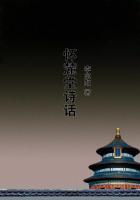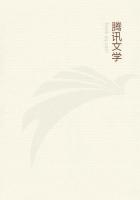MY FIRST TRIP TO ARIZONA
I recall with vivid distinctness my first trip to Arizona and introduction to ranch life in the spring of 1884. The experience made a deep impression and has led me to repeat the visit many times since then, with increased interest and pleasure.
During the previous year my brother located a cattle ranch for us in Railroad Pass in southeastern Arizona. The gap is one of a series of natural depressions in a succession of mountain chains on the thirty-second parallel route, all the way from New Orleans to San Francisco over a distance of nearly twenty-five hundred miles. The Southern Pacific Railroad is built upon this route and has the easiest grade of any transcontinental line.
Railroad Pass is a wide break between two mountain ranges and is a fine grazing section. It is handsomely bounded and presents a magnificent view. To the north are the Pinaleno mountains, with towering Mt. Graham in their midst, that are nearly eleven thousand feet high and lie dark in the shadows of their dense pine forests. Far to the south rise the rugged Chiricahuas, and nearby stands bald Dos Cabezas, whose giant double head of granite can be seen as a conspicuous landmark over a wide scope of country. The distance across the Pass as the crow flies is, perhaps, fifty miles. Beyond these peaks other mountains rise in majestic grandeur and bound the horizon in every direction.
At the time that the ranch was located the Pass country was considered uninhabitable because of the scarcity of water and the presence of hostile Indians. No permanent spring nor stream of water was known to exist in that whole region, but fine gramma grass grew everywhere. Its suitability as a cattle range was recognized and caused it to be thoroughly prospected for water, which resulted in the discovery of several hidden springs. All of the springs found, but one, were insignificant and either soon went dry or fluctuated with the seasons; but the big spring, known as Pinaleno, was worth finding, and flows a constant stream of pure, soft water that fills a four-inch iron pipe.
When the spring was discovered not a drop of water was visible upon the surface, and a patch of willows was the only indication of concealed moisture. By sinking a shallow well only a few feet deep among the willows, water was struck as it flowed through coarse gravel over a buried ledge of rock that forced the water up nearly to the surface only to sink again in the sand without being seen. A ditch was dug to the well from below and an iron pipe laid in the trench, through which the water is conducted into a reservoir that supplies the water troughs.
Again, when the ranch was opened the Indians were bad in the vicinity and had been actively hostile for some time. The ranch is on a part of the old Chiricahua reservation that was once the home and hunting grounds of the tribe of Chiricahua Apaches, the most bold and warlike of all the southwest Indians. Cochise was their greatest warrior, but he was only one among many able Apache chieftains. He was at one time the friend of the white man, but treachery aroused his hatred and caused him to seek revenge on every white man that crossed his path.
His favorite haunt was Apache Pass, a convenient spot that was favorable for concealment, where he lay in wait for weary travelers who passed that way in search of water and a pleasant camp ground. If attacked by a superior force, as sometimes happened, he invariably retreated across the Sulphur Spring valley into his stronghold in the Dragoon mountains.
Because of the many atrocities that were committed by the Indians, white men were afraid to go into that country to settle.
Even as late as in the early eighties when that prince of rascals, the wily Geronimo, made his bloody raids through southern Arizona, the men who did venture in and located ranch and mining claims, lived in daily peril of their lives which, in not a few instances, were paid as a forfeit to their daring.
The Butterfield stage and all other overland travel to California by the southern route before the railroads were built, went through Apache Pass. Although it was the worst Indian infested section in the southwest, travelers chose that dangerous route in preference to any other for the sake of the water that they knew could always be found there.
The reputation of Apache Pass, finally became so notoriously bad because of the many murders committed that the Government, late in the sixties, built and garrisoned Ft. Bowie for the protection of travelers and settlers. The troops stationed at the post endured much hardship and fought many bloody battles before the Indians were conquered. Many soldiers were killed and buried in a little graveyard near the fort. When the fort was abandoned a few years ago, their bodies were disinterred and removed to the National cemetery at Washington.
Railroad Pass is naturally a better wagon road than Apache Pass, but is without water. It was named by Lieut. J. G. Parke in 1855while engaged in surveying for the Pacific Railroad, because of its easy grade and facility for railroad construction.
I timed my visit to correspond with the arrival at Bowie station on the Southern Pacific Railroad, of a consignment of ranch goods that had been shipped from St. Louis. I was met at the depot by the ranch force, who immediately proceeded to initiate me as a tenderfoot. I inquired of one of the cowboys how far it was to a near-by mountain. He gave a quien sabe shrug of the shoulder and answered me in Yankee fashion by asking how far I thought it was.
Estimating the distance as in a prairie country I replied, "Oh, about a mile." He laughed and said that the mountain was fully five miles distant by actual measurement. I had unwittingly taken my first lesson in plainscraft and prudently refrained thereafter from ****** another sure guess.















